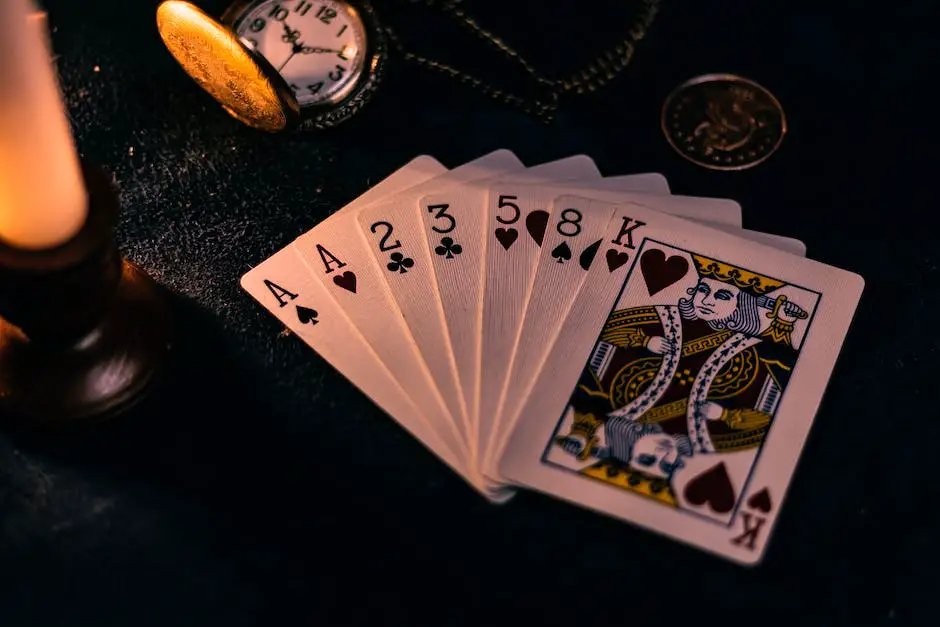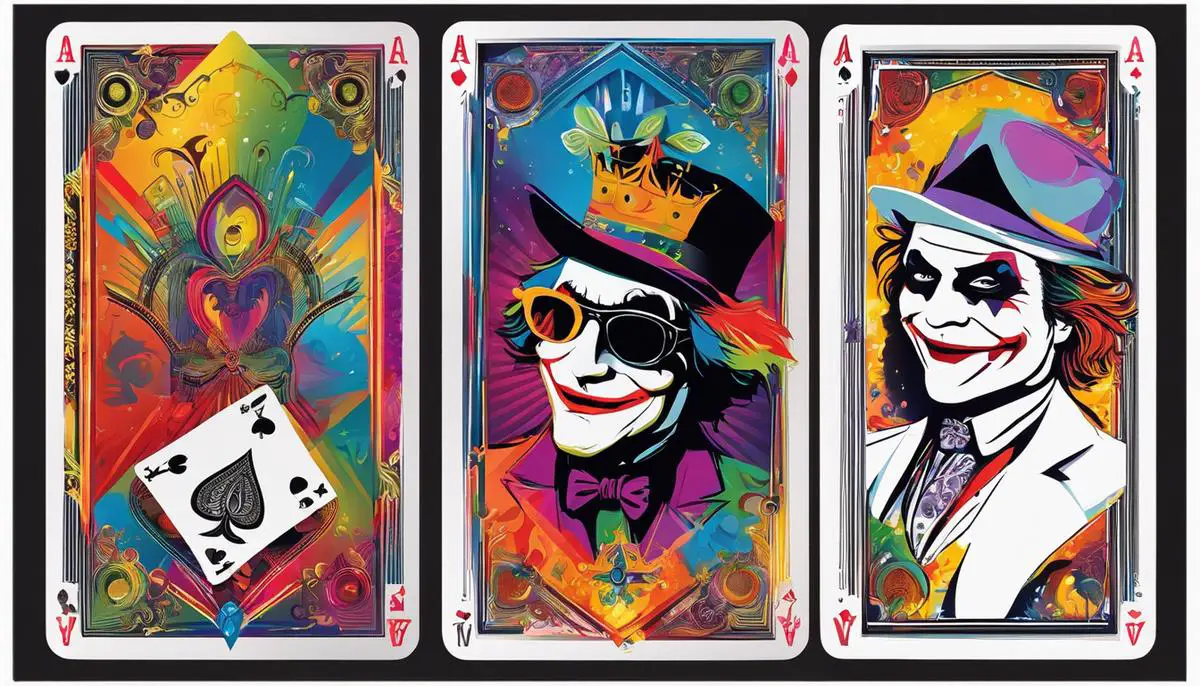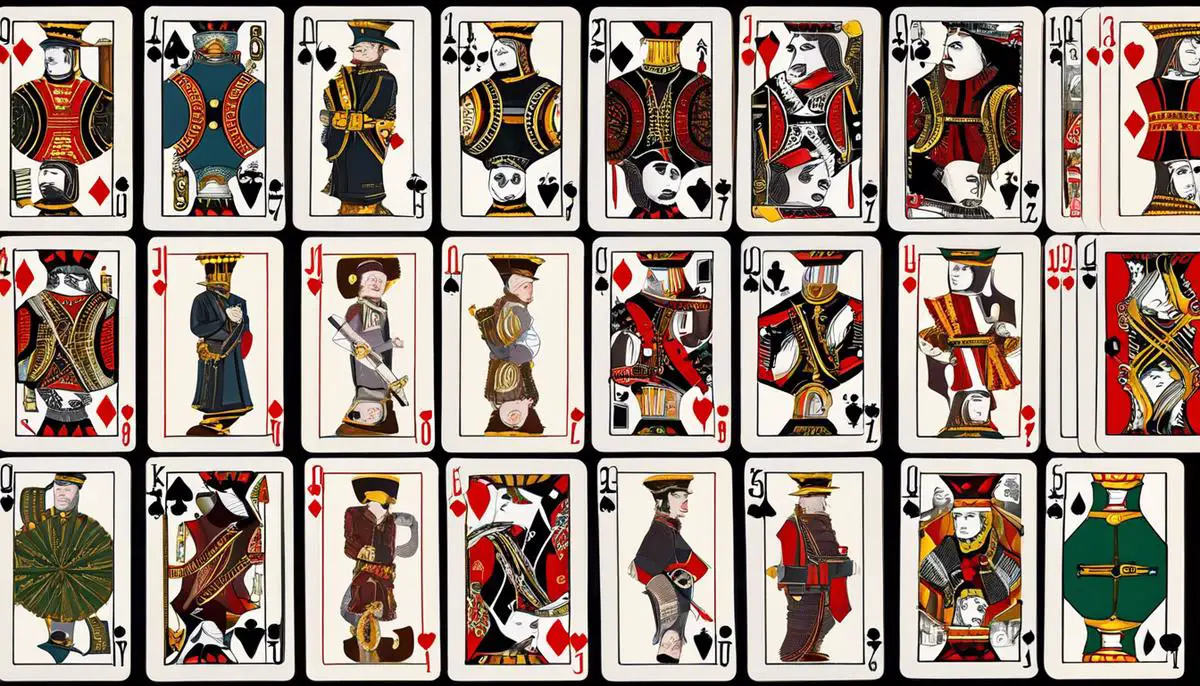Playing cards have been an intriguing medium of entertainment for centuries, offering countless variations of games and strategies. A deck of cards, in its simplicity, comprises a complexity of suits, face cards, and numbers that most casual players may overlook. This insight delves into the inherent composition of a standard deck of cards, highlighting the integral suite types, their numerical range, and the roles of different face cards. Further, the piece extends to explore the subtle dynamism that jokers introduce to a deck, altering the play and overall count of cards. Moreover, it provides a broader outlook on the diverse kinds of decks available with jokers, intricate designs to memorabilia, widening the perspective on playing card variations available in the market.
Understanding Standard Card Decks
Anatomy of a Standard Playing Card Deck
Are you ready to dive into the fascinating world of playing cards? Perfect! Because right here, right now, we’re going over the standard deck’s composition. With 52 cards dividing themselves neatly into a network of numbers, suits and colors, understanding the basic make-up of a deck is a breeze – your essential first step into the vast realm of card games and tricks.
The first distinguishing feature of a playing card deck is the total count. A standard deck comprises 52 individual cards. But what makes up these 52 cards? These are neatly divided into four different suits: Spades (♠), Hearts (♥), Diamonds (♦), and Clubs (♣).
Each suit is represented 13 times, forming a beautiful symmetry. These thirteen cards per suit include numerals from two through ten, and the so-called face or court cards: Jack (J), Queen (Q), and King (K). Don’t forget the Ace (A), which often plays a unique role in card games, sometimes representing the lowest number (1) and at other times the highest.
Now, for the color scheme, it is simply a division by two. Spades and Clubs are black, while Hearts and Diamonds are red. This helps players quickly identify the card’s suit in many games.
It’s also worth mentioning another duo that often accompanies a standard deck, although they don’t technically count in the 52-card tally: the Jokers. Two jokers are usually included in a new deck, designed with unique, colorful images, and often used in specific games as wild cards or play enhancers.
So, there you have it: Four suits of 13 cards each, a combo of red and black hues, and occasionally a pair of jokers sporting eccentric attire. This reliable 52-card friend is ready to take you on countless adventures, from the strategic landscapes of Poker and Bridge to the heart-pounding excitement of Slapjack and Crazy Eights.
With even this basic understanding of a deck’s composition, everyone’s gateway into the world of card games swings wide open. All it takes is a little shuffle, a deal, and before you know it, you’re off, defining your own journey with this simple but profoundly versatile set of 52. After all, a deck of cards is more than just cardboard — it’s the ticket to an endless array of games, an instrument of luck and strategy, and most importantly, a centerpiece for fun and fellowship.
Isn’t it time to deal yourself in? You just might be surprised where those 52 pieces of cardstock can take you.

Inclusion of Jokers
Unveiling the Joker: A Game-Changer in Traditional Deck Set-Up
Imagine an unexpected guest at a party who suddenly turns all the attention towards them. This is exactly how a Joker functions in the world of playing cards, stirring up the usual dynamic and adding an intriguing twist to the game. Often overlooked as just an ‘extra’ card, the Joker brings a fresh dimension to the traditional deck set-up. This wildcard’s unpredictability can make any game more challenging and alluring, turning the entire gameplay on its head.
Adding Jokers to the standard 52 card deck increases the count to 54. Usually a deck contains two Joker cards, but this number can also vary depending on the game being played. This wildcard is not tied to any color or suit, giving it an unmatched flexibility and transforming ordinary games into extraordinary ones.
In many card games, the role of a Joker is to substitute any other card, providing a player with an unexpected advantage. Games like Canasta and Crazy Eights make extensive use of this wildcard, altering the traditional game flow and heightening the excitement. Given its varied range of use, understanding the Joker’s role is crucial to mastering such strategic games.
It is interesting to observe that not all games welcome the unpredictable nature of this wildcard. Certain traditional games prefer the rhythm established by the original 52-card layout. An example would be Bridge, which sticks to time-honored rules and keeps Jokers aside. However, even when it’s not actively participating, the Joker somehow finds a way into gameplays, sometimes acting as a rule or score reminder.
Jokers also bring a dash of humor. Traditionally, one Joker card is illustrated in full color while the other in black and white or subdued shades. The vibrant card, sometimes referred to as the “Big Joker,” is deemed superior to its less colorful “Little Joker” counterpart. These representations add to the creative and fun elements of playing cards.
Therefore, there’s no denying that Jokers effectively alter the traditional deck set-up. They bring an element of surprise, keep the suspense intact, and make even the most monotonous games riveting. Whether it’s their unpredictability or spontaneous power, their mere presence turns ordinary play into an extraordinary experience. So, the next time you draw a Joker, embrace it for the game-changer it truly is. Who knows, it might just be your lucky card!

Varieties of Decks with Jokers
Diving right in, it’s interesting to note that not all card decks are created equal. Especially when we consider the range that include the card world’s wildcard – the joker. The standard deck of 52, which is Garden-variety for most people, may also come augmented by one or two joker cards, supplementing common games like Euchre or Canasta. However, this isn’t where the story ends.
To start, there is the Pinochle deck. This is a deck tailored for the trick-taking game of the same name. This deck contains 48 cards consisting of two copies each of the 9, 10, jack, queen, king, and ace cards of all four suits, and yes, some versions also include the joker for added complexity.
Another notable mention is the Tarot Nouveau deck, a deck used primarily in France for the game “French Tarot”. This unique deck features 78 cards, 21 of which are trump cards, along with one that acts as a joker or “excuse” in the game. This deck embraces a more intricate design and usage of cards, with its own set of rules and wisdom to uncover.
For the fans of Rummy games, there are decks designed specifically for them as well. For instance, the Canasta deck, also known as the “Bicycle Canasta” deck, includes 108 cards, featuring custom-designed cards that are perfect for games that require multiple decks. And yes, you guess it right – jokers are a part of this deck too.
Stepping beyond traditional card decks and into the territory of custom decks is where real excitement begins. Custom decks often feature unique imagery and designs that can complement a wide array of themes. They can include any number of jokers or wild cards in line with the theme. It’s not unusual to find decks with zodiac signs, mythical symbols, or pop culture references with extra jokers to spice things up.
So, how does one choose from such diversity? Whether it’s a casual round of Poker on a lazy weekend, or a fierce battle of Canasta with friends, the choice largely rests on the game being played. And while standard or custom-designed decks have their own charm, there’s always something exciting about adding that joker into the mix—it’s a game-changer and sometimes, the bearer of luck!
Through all the shuffling and dealing, it’s clear that the joker plays a dynamic role, transcending the borders of standard and specialty decks. It adds that precious unpredictability, and often, a dash of humor too!
In conclusion, the world of card decks is much bigger than a mere deck of 52. From Pinochle and Tarot Nouveau decks to the more robust Canasta deck, the joker continues to find its space, bringing its own elusive charm to the party. It all boils down to picking a deck that fits the bill, and letting the joker do its job—creating endless possibilities for exciting gameplay.

The intrigue that comes with a deck of cards extends far beyond the shuffled mix of 52. The addition of jokers diversifies game dynamics, while the wide variety of decks available reflect a replica of the varied world of card games. As enthusiasts or beginners in the expansive arena of card games, taking the time to understand the composition and intricacies of a card deck, including the incorporation of jokers, primes us not just for the game in hand but, more fundamentally, develops a deep appreciation for the art and skill behind the humble deck of cards. This supports growth in card game strategy, versatility in playing styles, and ultimately, a more enriching card game experience.

